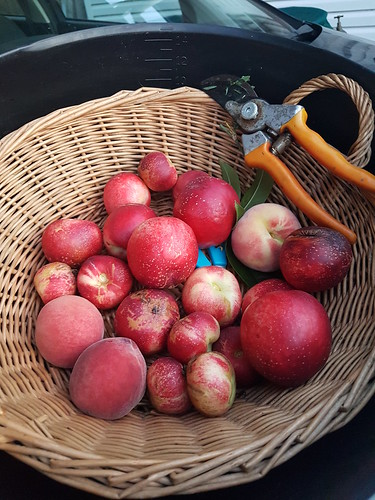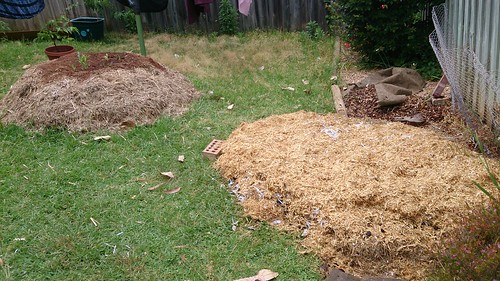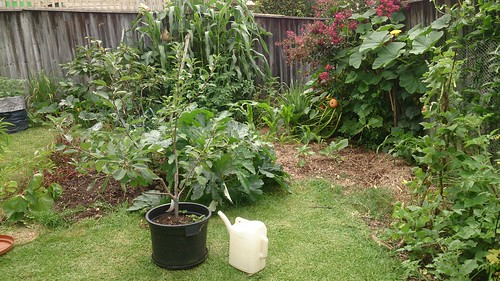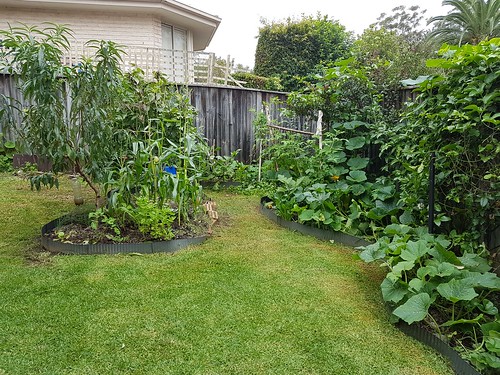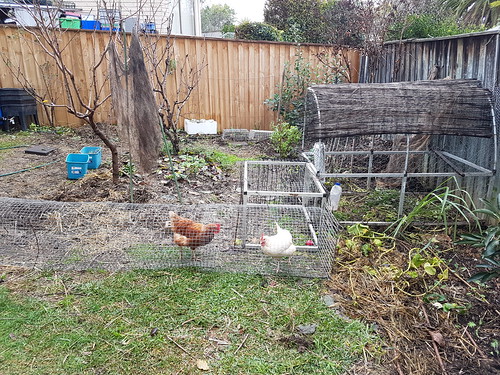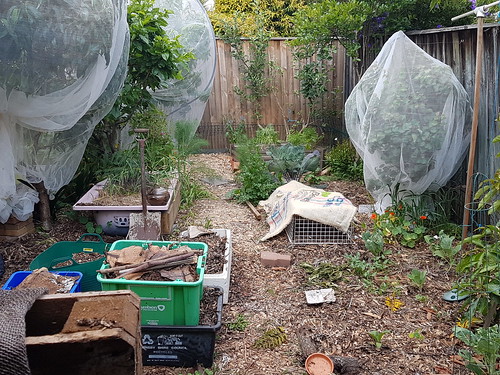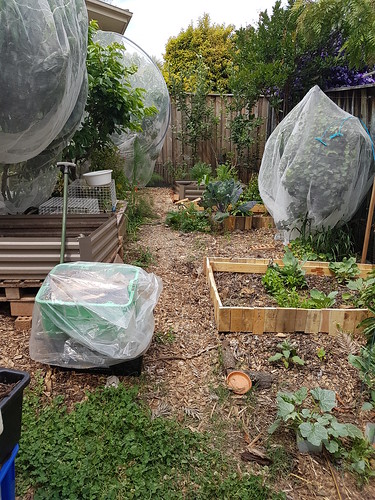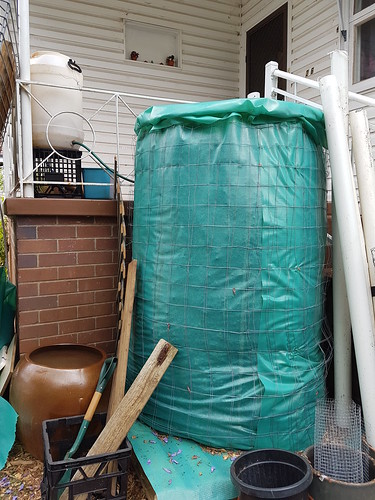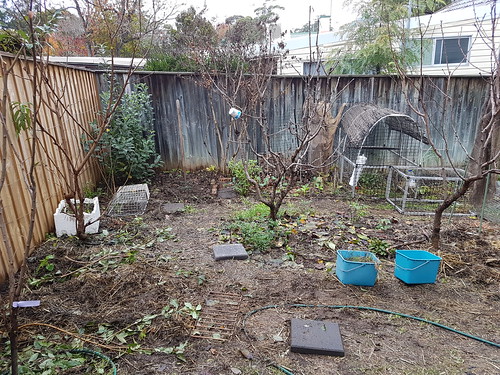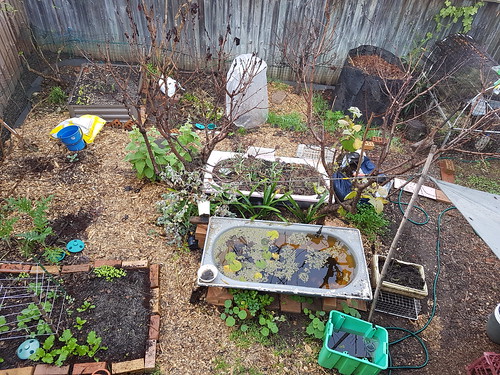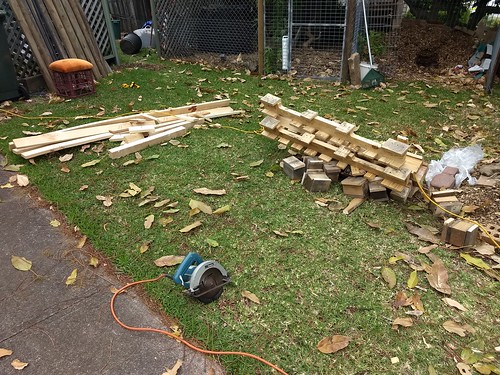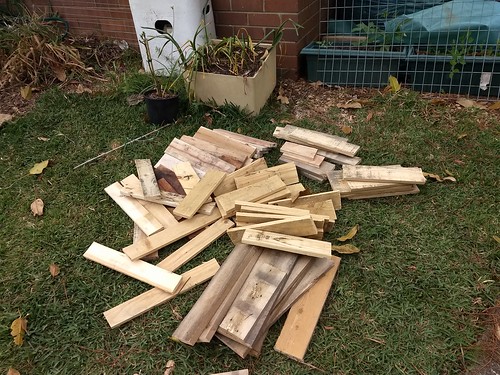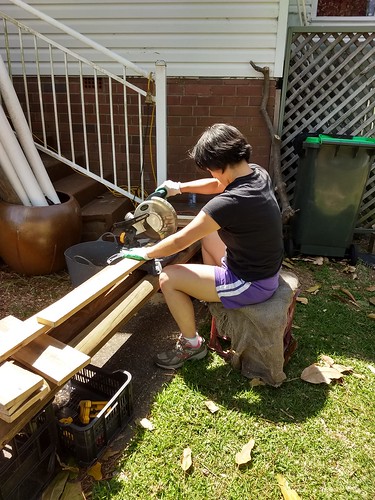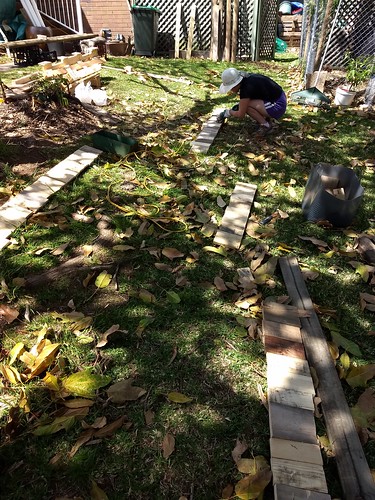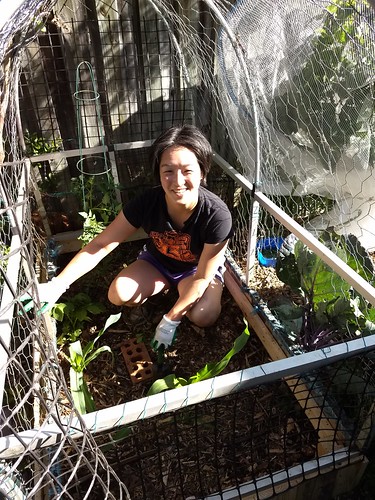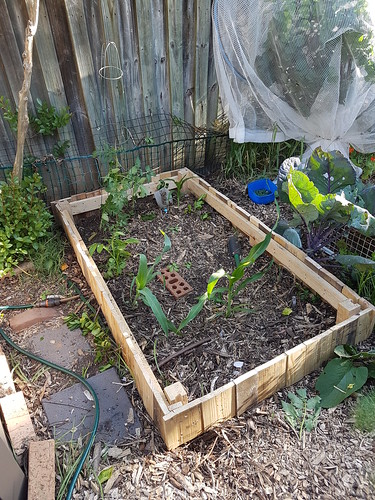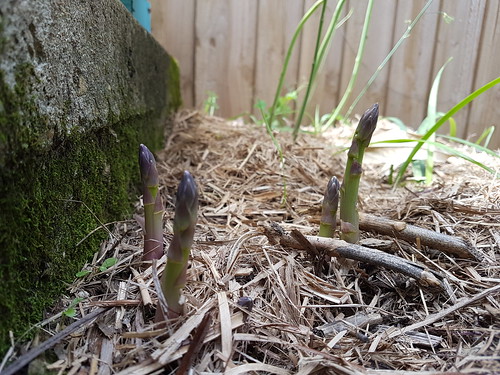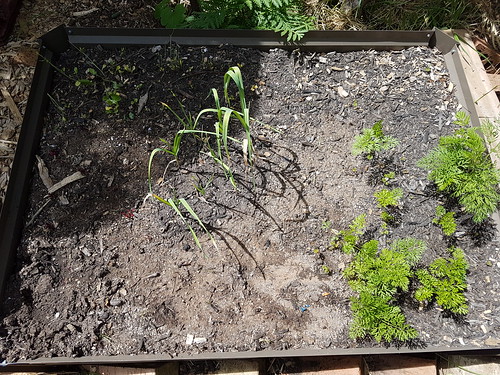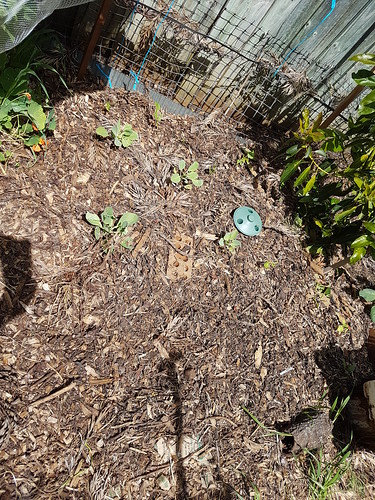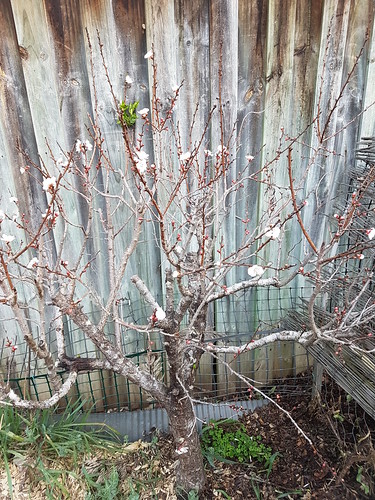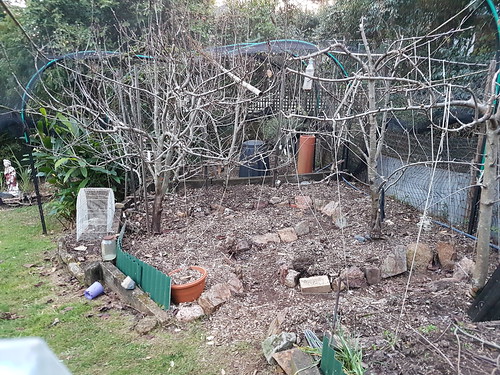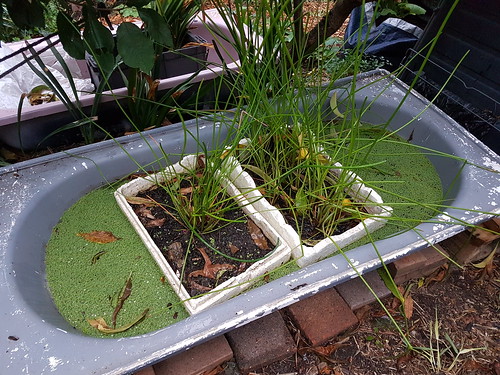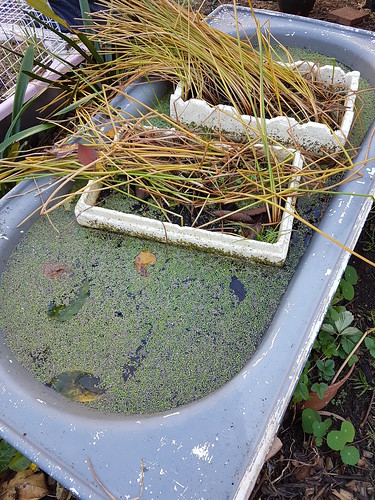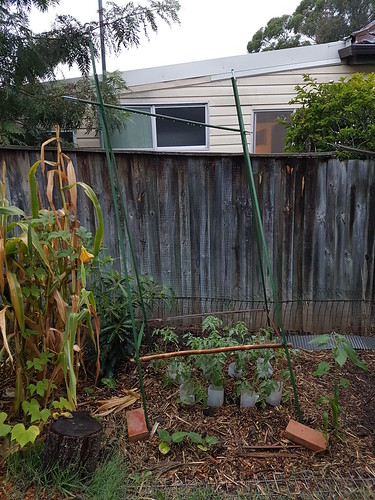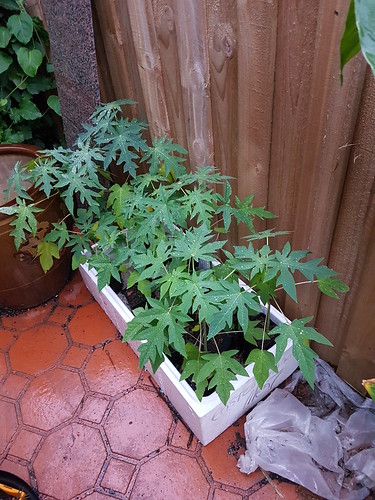We're going into Level 2 water restrictions on the 10th December. No watering with the hose ever, buckets only before 10am and after 4pm. No filling any ponds or pools at all. 15 minutes a day of watering with a dripper system. No washing of cars or hard surfaces.
I'm fine without the washing of cars or hard surfaces, etc. The pond will do okay; I could probably fill it from shower water, but buckets for the garden/trees? That's going to be a tough one.
I have two wicking beds set up. I was going to set up a third, but it hasn't yet happened and I'm not sure when it will. (Also where it will, because space is semi-limited right now...)
Have spoken to the plumber about:
- Running the gutters to the water tank.
- Running a pump connected to a tap east and west of B1's wall.
- Having a first-flush system to clear out the gutters and the downpipe.
The main issue is cost. Well, and getting a quote back. He came by last Tuesday and we haven't heard yet. Then there's persuading my sister that we can afford it (technically, we can't: I'm not earning anything and she's earning just enough to cover the mortgage and the bills and we have nothing in savings anymore), then there's actually getting the work done...
--
greywater plan
At this point, I'm aiming to supply as much of the water for the garden from the house greywater: kitchen, laundry, and bathroom.
Kitchen will be water from washing hands and vegies, rinsing out non-greasy things (such as coffee filters), and foods that were boiled to cook them (eggs, vegetables). Water from the kitchen will go out to the front bed to feed the plants growing in between the fruit trees.
Laundry will be the final rinse cycle of the washing machine. Water from the laundry will go out to the herb bed, the asparagus bed, the close vegies bed, and the bramblebed.
Bathroom will be the bucket baths my sister takes every night (even in winter), and whatever fills the giant bucket I'm standing in for my shower. Water from the bathroom will be pumped out the back to the garden beds there.
The method of delivery for the laundry and bathroom is going to be a small pump, the method of delivery from the kitchen will be gravity after pouring rinse buckets out the window.
I'm going to need assistance for this, because it's pretty long and complicated. But it needs to be done in the next week because otherwise we're looking at a garden without water which...not good. Very very not good...
--
Friday:
So I have all the little fixtures for getting the pump working out the front door to the lounge room garden bed...
However I've decided that I need to replant the lychee and the avocado - planting them on a mound instead of in the ground - they've probably hit clay and that's why they're dying.
eta: just read up on lychees and they recommend not planting on a mound. So I'll leave it where it is (although it's probably too close to the house, it's a dwarf and I can keep it pruned). Also this video may be relevant. Although it's just reminded me that I need to make a cover/canopy for it, and I need to redo the cover/canopy on the avocado, which half-blew away in the wind last week...
The avocado in the lounge-room bed definitely needs mounding, though. This video (by an Australian, no less) details why. Helpful and informative and I just wish I'd known this before I planted all my avos!
The major thing standing in my way right now, though, is that I've developed the old 'tennis elbow' in my left arm (with a milder ache in the right arm) precisely at the time when I need to do lots of dexterous and strength-involved movement with my arms.
*sigh*
